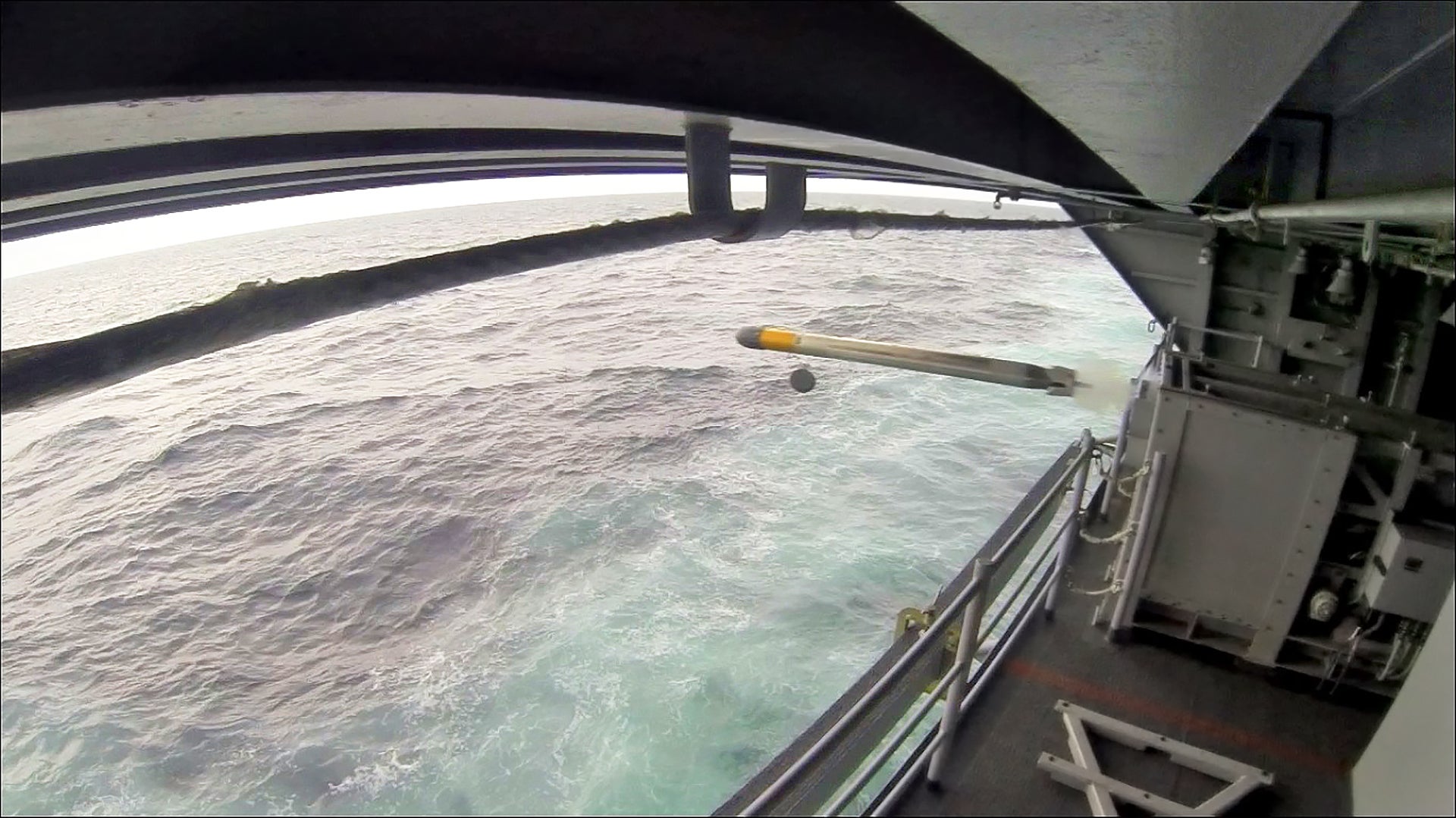The danger posed to Navy surface combatants by submarines is rapidly expanding around the globe. Spurred by leaps in Air Independent Propulsion technologies, even small and relatively inexpensive AIP equipped diesel-electric subs can be as quiet their nuclear counterparts and still stay submerged for weeks at a time. The proliferation of this technology–as well as expanding fleets of Chinese and Russian fast attack nuclear submarines–have made America’s nuclear supercarriers vulnerable to attack despite a multi-layered defensive umbrella.
This umbrella includes a host of aerial and surface defenses, from long-range missiles and manned aircraft, to the RIM-116 Rolling Airframe Missile and Mk15 Phalanx close in weapons systems. A carrier’s submarine defenses use a similar layered approach, though historically they have lacked a close-in defensive system capable of countering incoming torpedoes.
Currently a carrier’s submarine defenses includes cruisers, destroyers and even Littoral Combat Ships, each equipped with sonars and torpedo systems. Supercarriers also travel with a small armada of sub-hunting MH-60R Seahawk helicopters, deployed on the carrier and its escorts. Even land-based P-3C and P-8A sea control aircraft support Carrier Strike Groups, and those airborn assets are being equipped with ever more capable weaponry for attacking prowling subs. Yet, among all of those heavy hitters, the Carrier Strike Group’s most potent anti-submarine weapon might be the nuclear fast-attack submarines assigned to it.
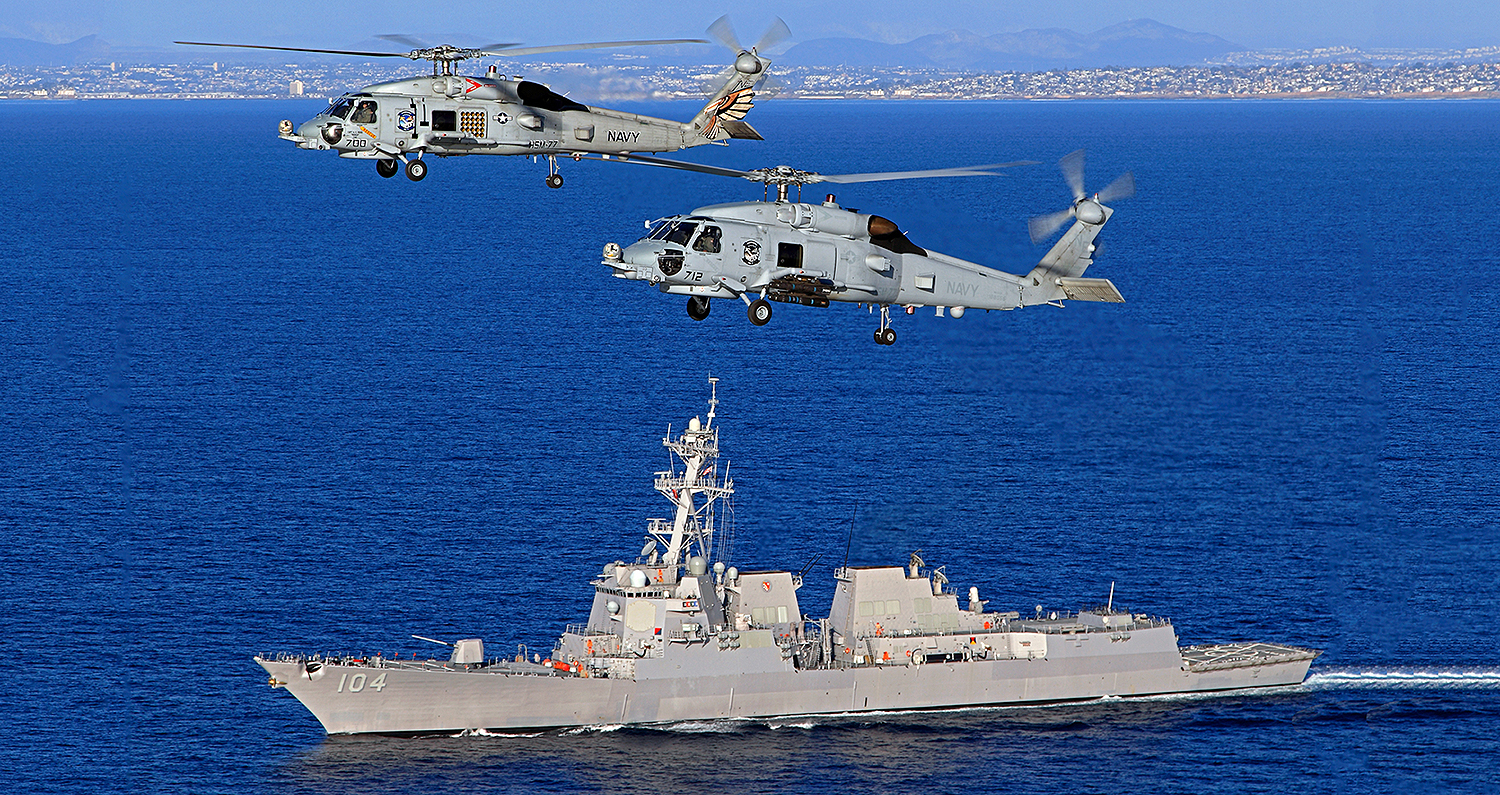
Still, even under the umbrella of all these defenses the centerpiece of the Carrier Strike Group, the carrier itself, is still vulnerable to submarine attacks. A single lucky shot could have horrific consequences for the ship, its crew, and even the world’s geopolitical balance.
So, what happens when a submarine is able to take a pot shot at a carrier, and its torpedo is in the water barreling towards the ship? Decoys can be quite effective at confusing incoming acoustic homing torpedos, but they don’t offer a “hard kill” capability, where the torpedo is physically destroyed or disabled before it can detonate dangerously close to the ship. Wake-homing torpedoes offer an even more complicated tactical scenario for American and allied surface combatants, and especially massive carriers.
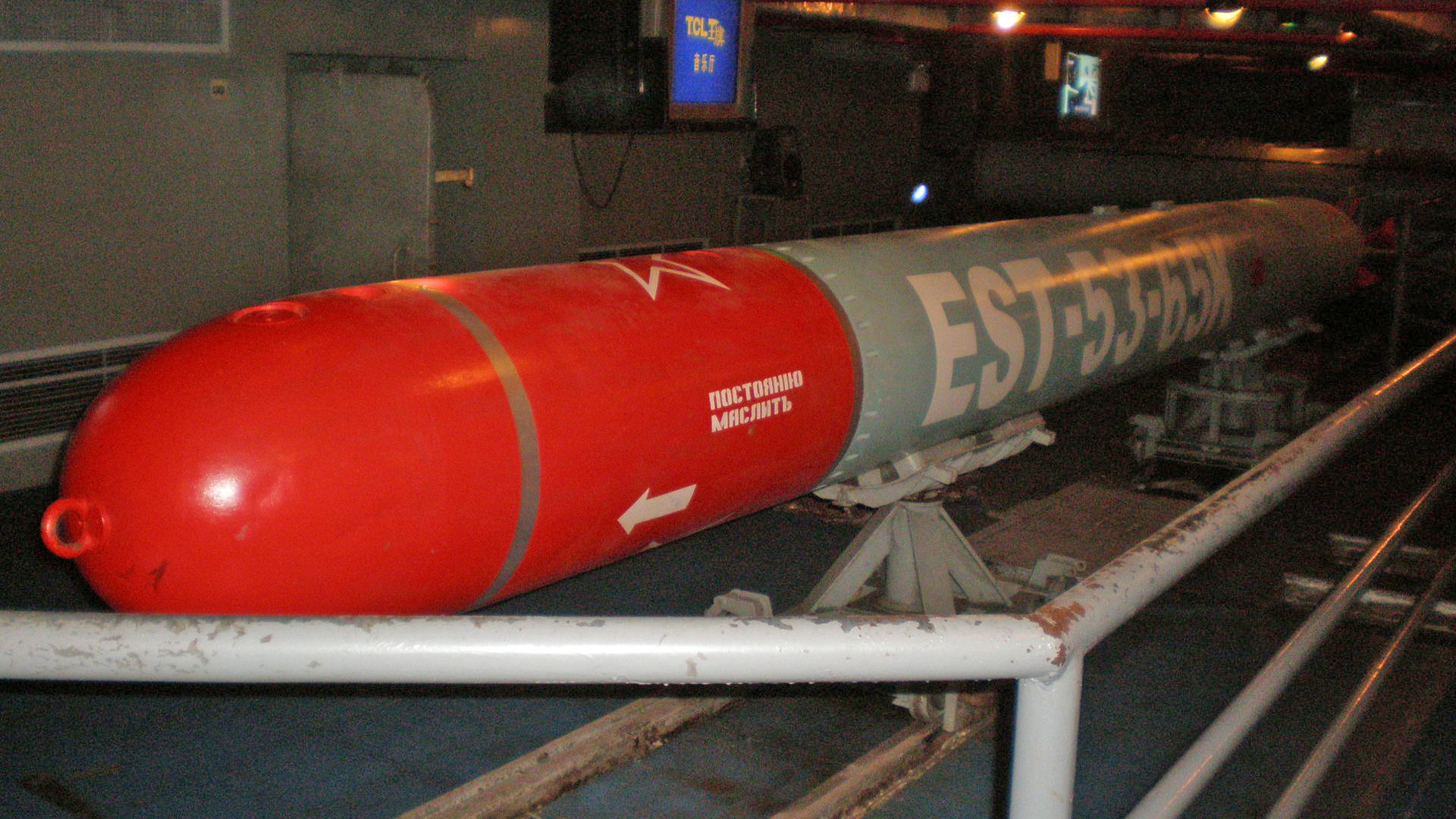
Russia’s Type 53 torpedo and–its export variants in particular–possess a troubling attack profile for American carriers. They can be fired from over a dozen miles away and home in on the wake churned up by a ship. During their terminal attack phase, they ping-pong back and forth across a wake in an ‘S’ pattern until detonating in close proximity to the ship’s fantail. Acoustic decoys have no affect on this type of torpedo, and the bigger the wake, the easier the target is to successfully engage. The Type 53 can be fired by cheap and plentiful Russia Kilo class diesel-electric submarines, which are used by the vast majority of the US Navy’s potential opponents.
In the Navy’s search for a close-in torpedo defense system, they wanted to address wake-homing torpedos. As such, not only would a way to detect incoming torpedoes have to be fielded as part of this holistic system, but a way to destroy them before they’re close enough to the ship to do serious damage would also have to be developed. Enter the Surface Ship Torpedo Defense (SSTD).
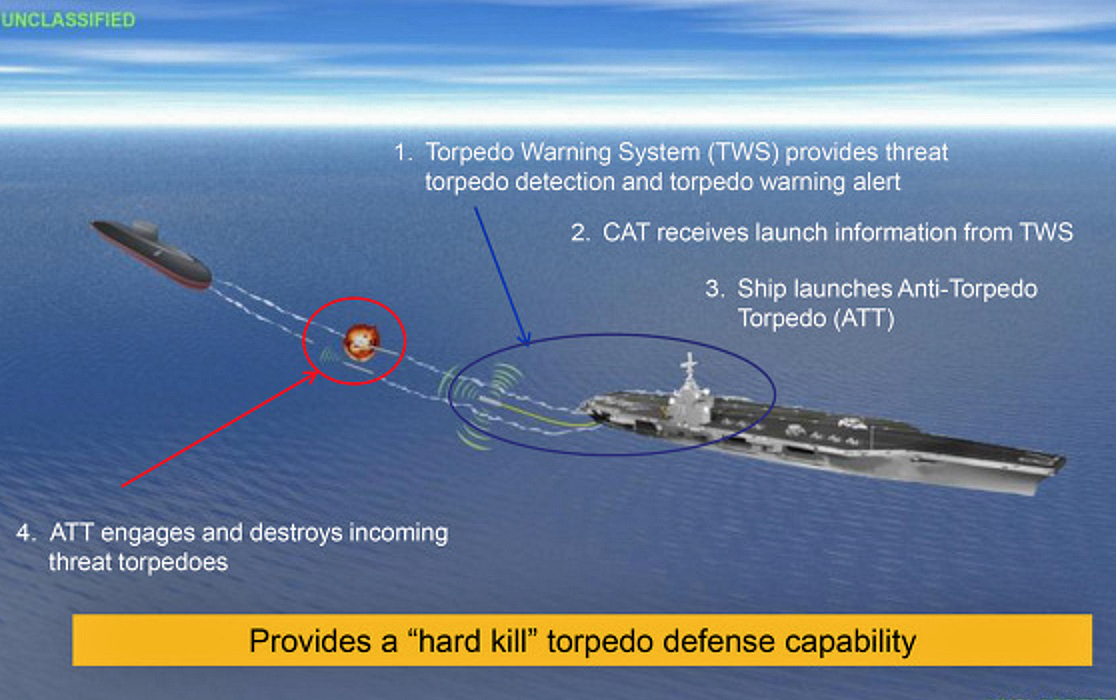
SSTD, which was developed fairly rapidly over the last decade, is a combination of systems that work together to defend the carrier (and eventually other smaller surface combatants) against torpedo attacks. It includes three major components. The first is a towed array acoustic sensor system called the Torpedo Warning System (TWS) that does just as it says, it detects an incoming torpedo. This sensor is trailed off a carrier’s fantail, so it’s particularly well suited for detecting incoming wake-homing torpedoes. This towed array is tied to tactical control stations that provide early warning, threat classification amd course of action advice to the ship’s Combat Information Center and bridge. The third and final component of SSTD is the Countermeasure Anti-Torpedo (CAT).
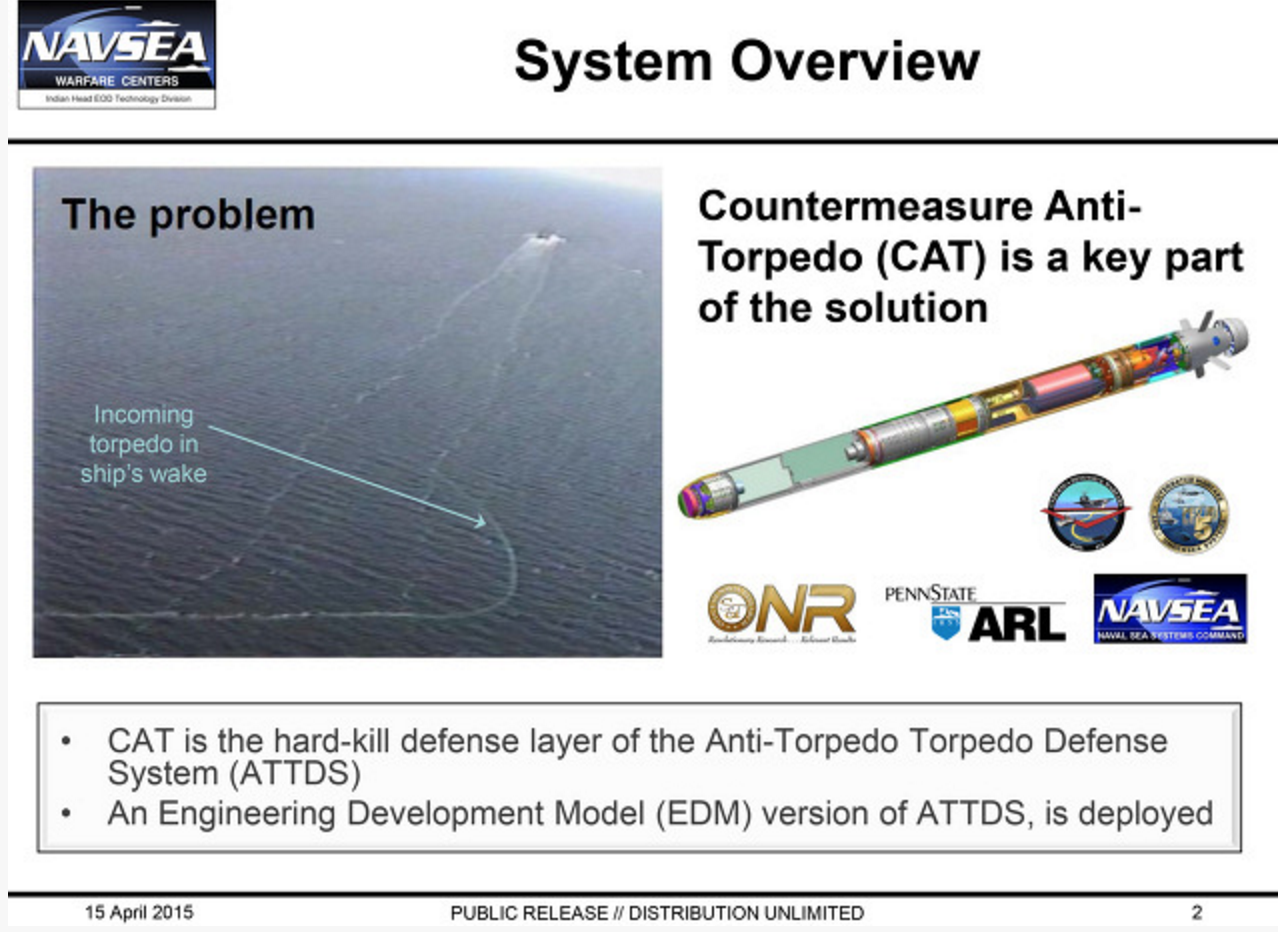
The CAT, which has been developed by Pennsylvania State University Applied Research Laboratory, is analogous to the RIM-116 Rolling Airframe Missile CIWS, but instead of anti-ship missiles or fast-attack boats, it targets targets incoming torpedoes. A miniature torpedo in its own right, CAT provides a rapidly deployable kinetic “hard kill” solution to use against torpedo threats. In other words, it can be launched in an instant, then it homes in on the enemy torpedo and destroys it through proximity detonation and/or collision. In simpler terms it is a torpedo interceptor.
CAT’s design is flexible and future versions could also act as decoys for certain enemy torpedo types, leading them away from the carrier (or whatever the launching ship may be) before detonation.
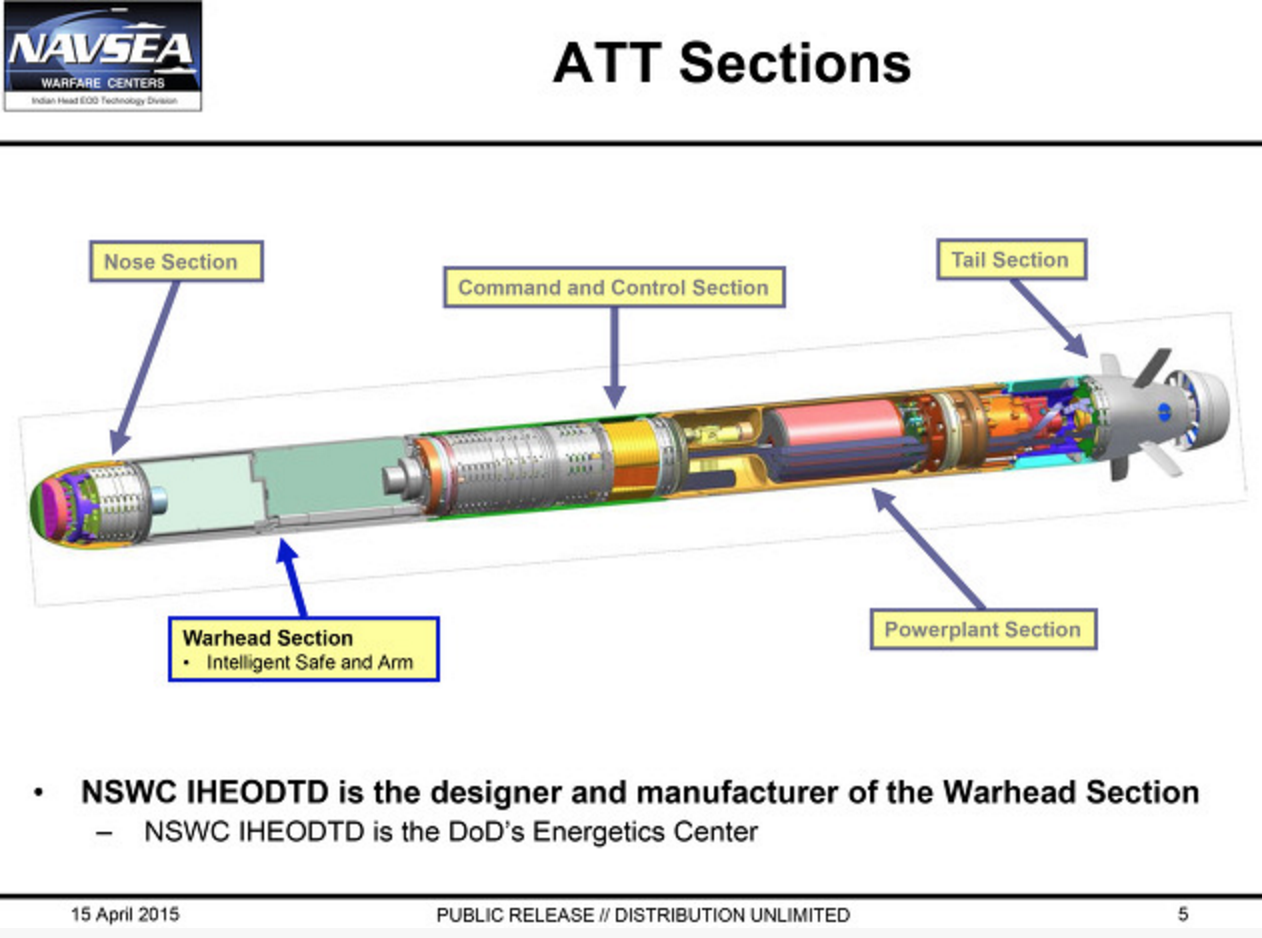
CATs are installed in self-contained launch containers attached to a multi-cell launch system. These systems are placed around a ship, similar to other CIWS systems, and are launched on remote during an attack.
It may sound like a concept, but this system is already deployed and operating; the Navy has quietly fielded it on half of America’s supercarriers. The first test unit was installed aboard the USS George H.W. Bush in 2013. During these initial carrier-borne tests, SSTD was launched against and intercepted seven target torpedoes. The trials proved that the whole system as an integrated unit worked and since then many improvements have been made. Now, just a few years later, USS Nimitz, which just came out of an extended overhaul period, is the 5th supercarrier equipped with the modular system.
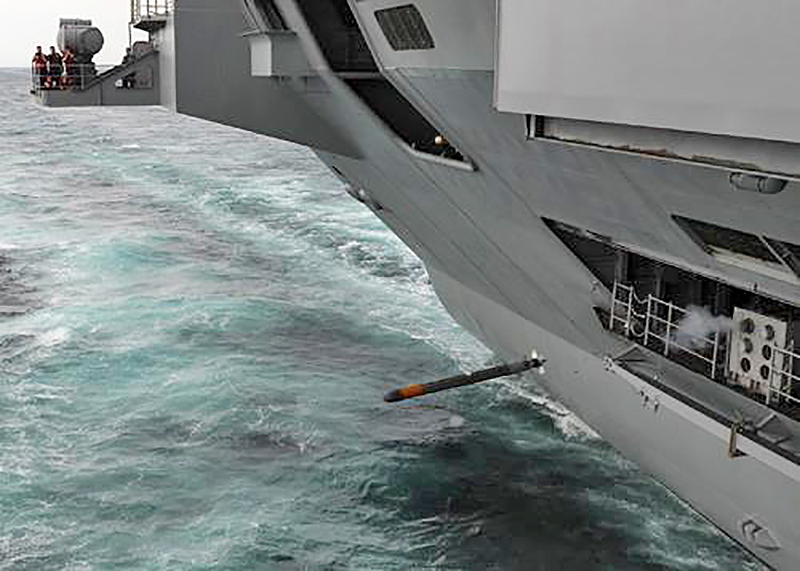
Eventually the Navy plans on fitting all its major surface combatants with SSTD, with a target date of 2035 to accomplish that goal. It will be interesting to see if the Navy attempts to integrate the system aboard the stealthy Zumwalt class, a ship which will by very nature of its mission be prowling in submarine infested waters. Then again, they may not even attempt to such an installation at all, just as they have omitted a traditional CIWS from its design. In the meantime America’s carriers will continue to be outfitted with these new torpedo defenses as they receive major service and upgrades. It’s very likely “Gator Navy” LHDs and LHAs will be next.
Having a torpedo close in weapon system (CIWS) is quite the accomplishment for the US Navy. When combined with advanced expendable and towed decoys, the system should provide a fairly robust and much needed last line of submarine defense for America’s largest and most expensive weapon systems.
Contact the author Tyler@thedrive.com
